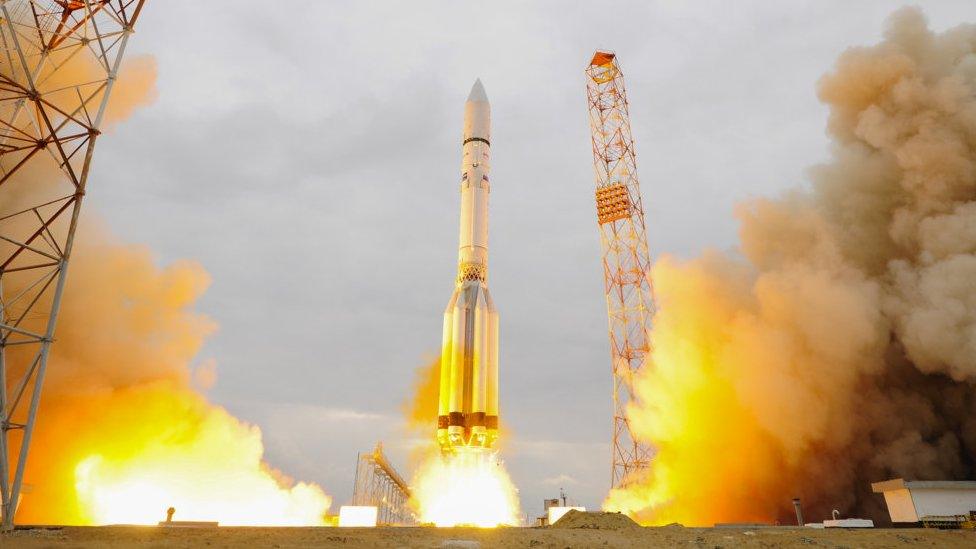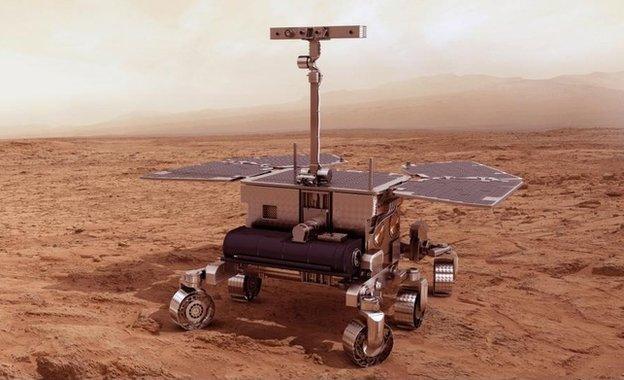Rover test: What's it like to ride a rocket to Mars?
- Published
Shake test on a robot destined for Mars: A rocket launch is very violent
So, if you spend a billion euros on a space mission, you better be sure it can survive the rocket ride off Earth.
This video shows a model of Europe's upcoming Mars rover being shaken to simulate the violent first few minutes of flight on leaving the launch pad.
ExoMars, as it is known, is a joint project with Russia to put a mobile laboratory on the surface of the Red Planet in 2021.
The hi-tech rover will look for signs of past or present life.
The vehicle pictured being put through a shake test at Airbus in Toulouse, France, is what is called a Structural Thermal Model, or STM.
It is a near-exact copy of the rover that will eventually be sent to Mars.
Engineers use this STM to run the rule over their design.
If there are flaws and something breaks on this test model, the engineers have time to make revisions for the "flight model".

The rover will be despatched on a Russian Proton vehicle
Peak frequencies in these shake tests reach 100Hz (100 cycles a second). G-forces (accelerations relative to standard Earth gravity) of 10.5 are achieved.
As well as being shaken, the STM has to spend time in a special chamber to see that it can cope with the sort of temperature extremes experienced during a Mars mission. It will have to show it can also perform in a vacuum.
The flight rover will follow behind the STM and repeat all the same checks.
The ExoMars mission is due to launch to the Red Planet on a Proton rocket in 2020.
European Space Agency member states, Russia and America have contributed instrumentation.
A key experiment will be to drill up to 2m below the surface of Mars.
It is thought that if any microbes exist on Earth's neighbour, they will be below ground. To date, surface missions have never got more than a few centimetres into the covering rock and dust.
The European industrial team working on ExoMars is led from Thales Alenia Space in Turin, Italy.
The flight model for ExoMars is currently being assembled at Airbus's British factory in Stevenage.

Artwork: The ExoMars rover will launch in 2020 and land in 2021
Jonathan.Amos-INTERNET@bbc.co.uk, external and follow me on Twitter: @BBCAmos, external